Abstract
Although previous workers had found no evidence of resistance to superinfection in vectors of filariasis, it was considered desirable to reinvestigate the subject because of the epidemiological implications, since a mosquito that can incubate to maturity successive broods of filarial larvae will obviously be a more efficient vector than one that cannot. The results obtained indicate that a Culex pipiens fatigans mosquito that picks up an infection early in its life can, by taking subsequent infecting feeds, remain infective for the rest of its life.
The movement of mature larvae in the vector and losses of larvae during feeding are of interest since from this information one can estimate the probable number of larvae deposited on the host at each feed and the period of infectivity of the vector. In the present experiment there were, on average, 6.1 larvae per infective mosquito before a second blood-meal; after the meal the figure was 3.6. Thus, 41% of the original infective larvae were lost; not all would be inoculated into the host, as some would die on the surface of his skin. The release of infective larvae through blood-feeding results from a combination of the passive pressure of the engorged blood in the abdomen and the active movement of the larva itself.
Full text
PDF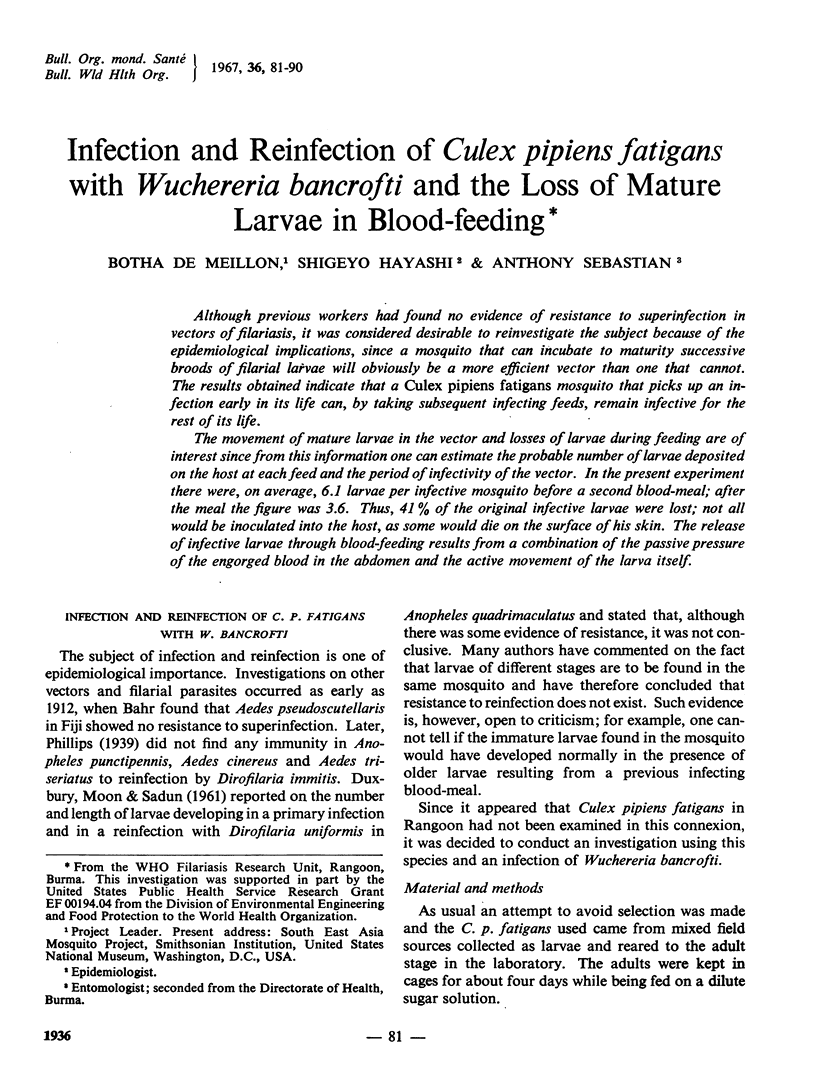

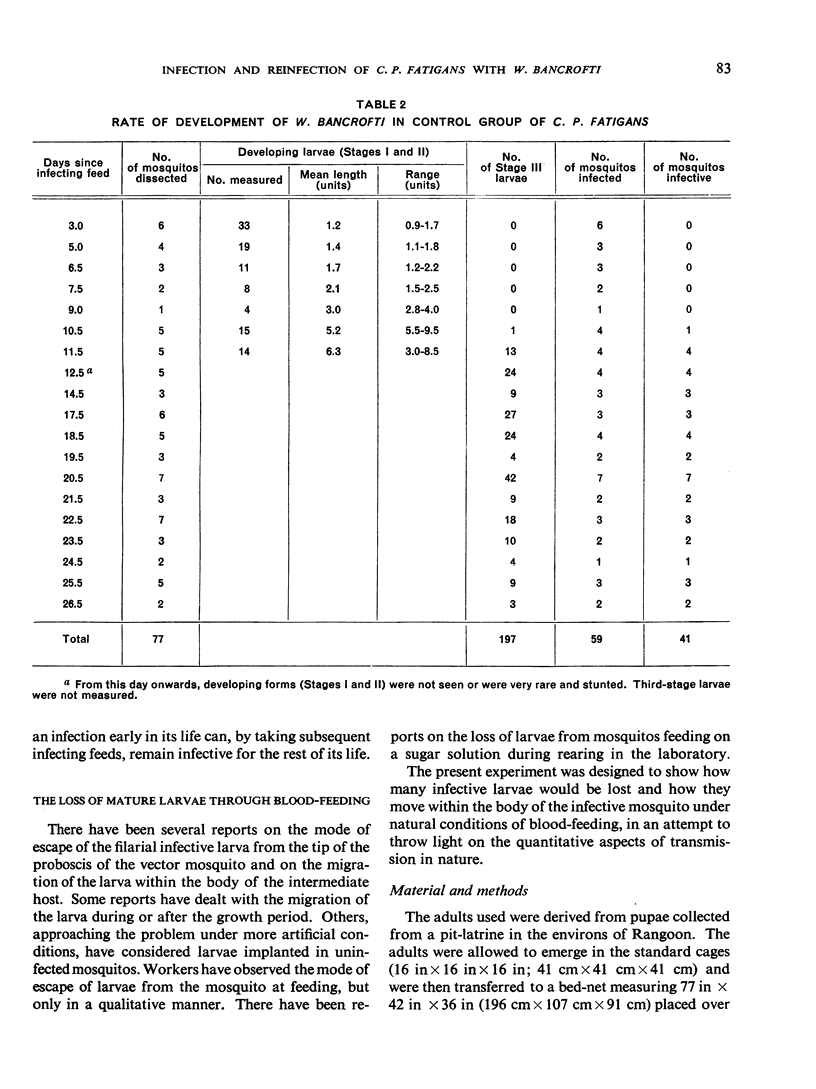
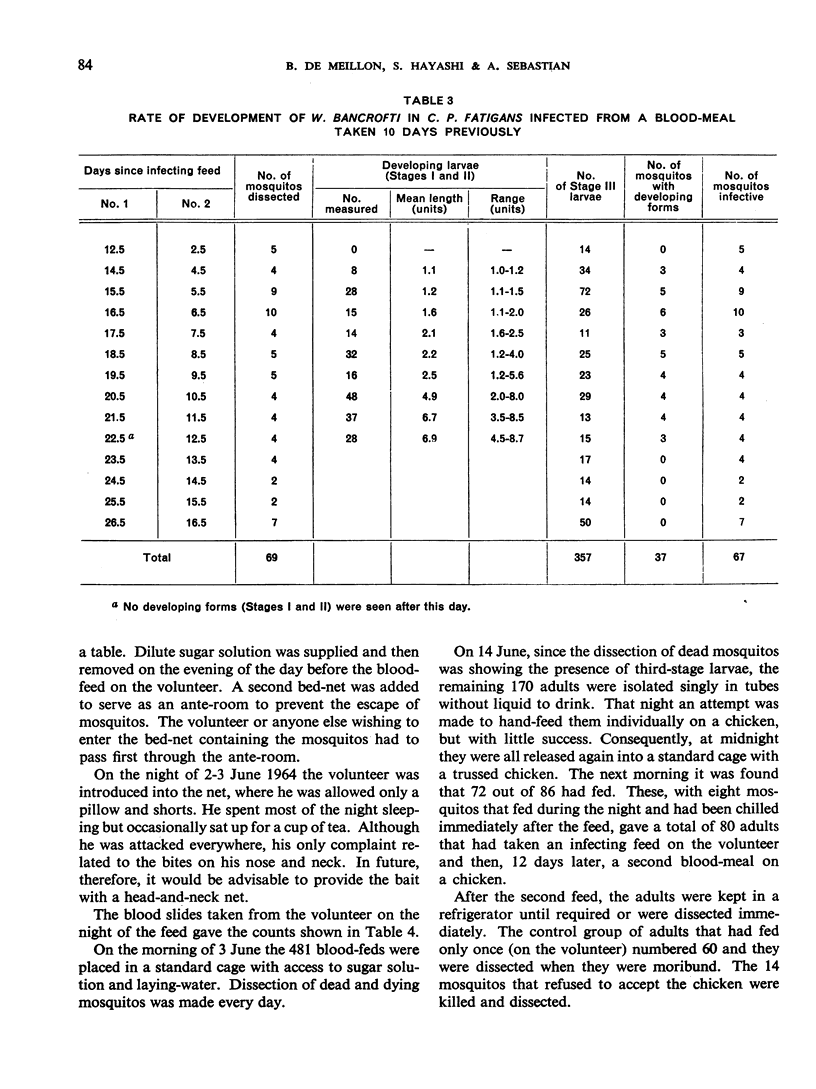
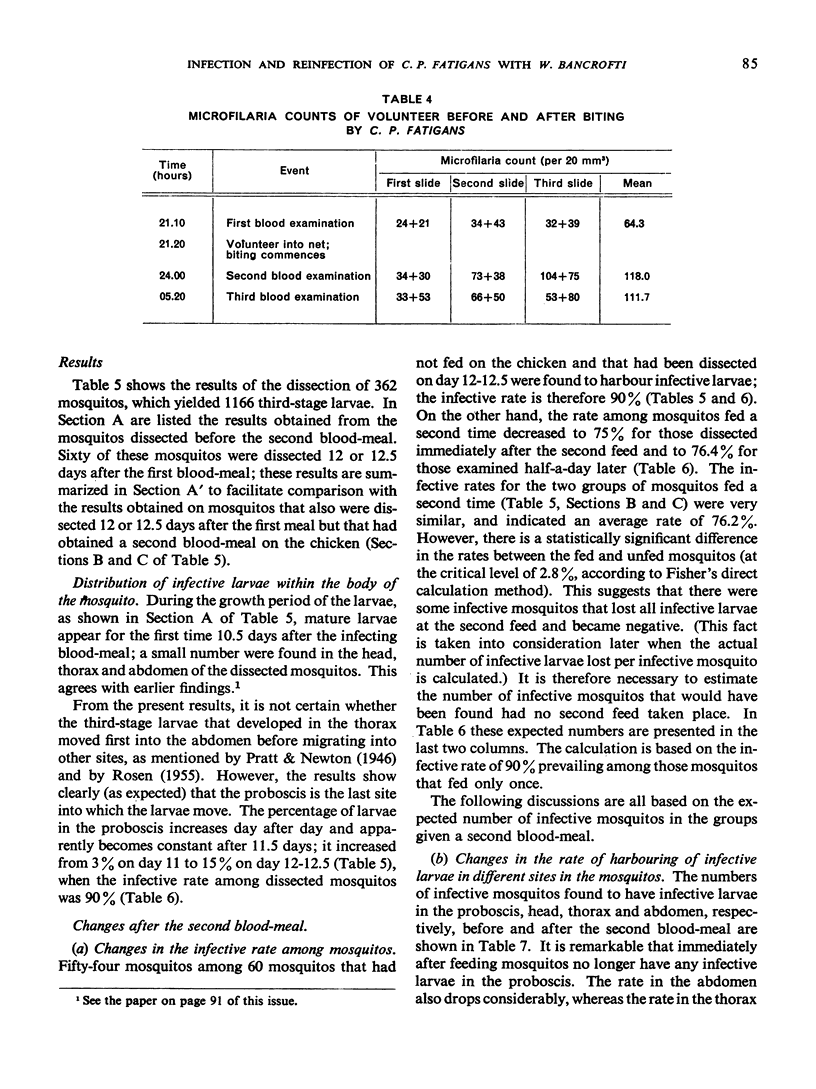

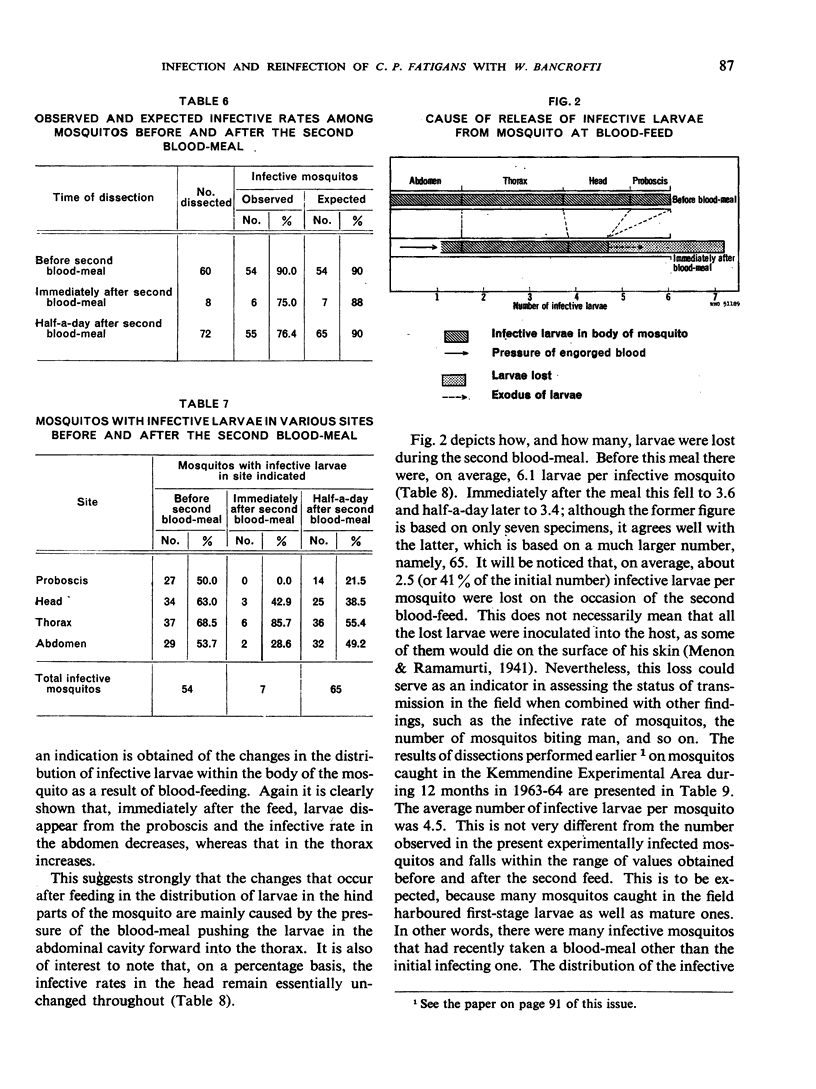
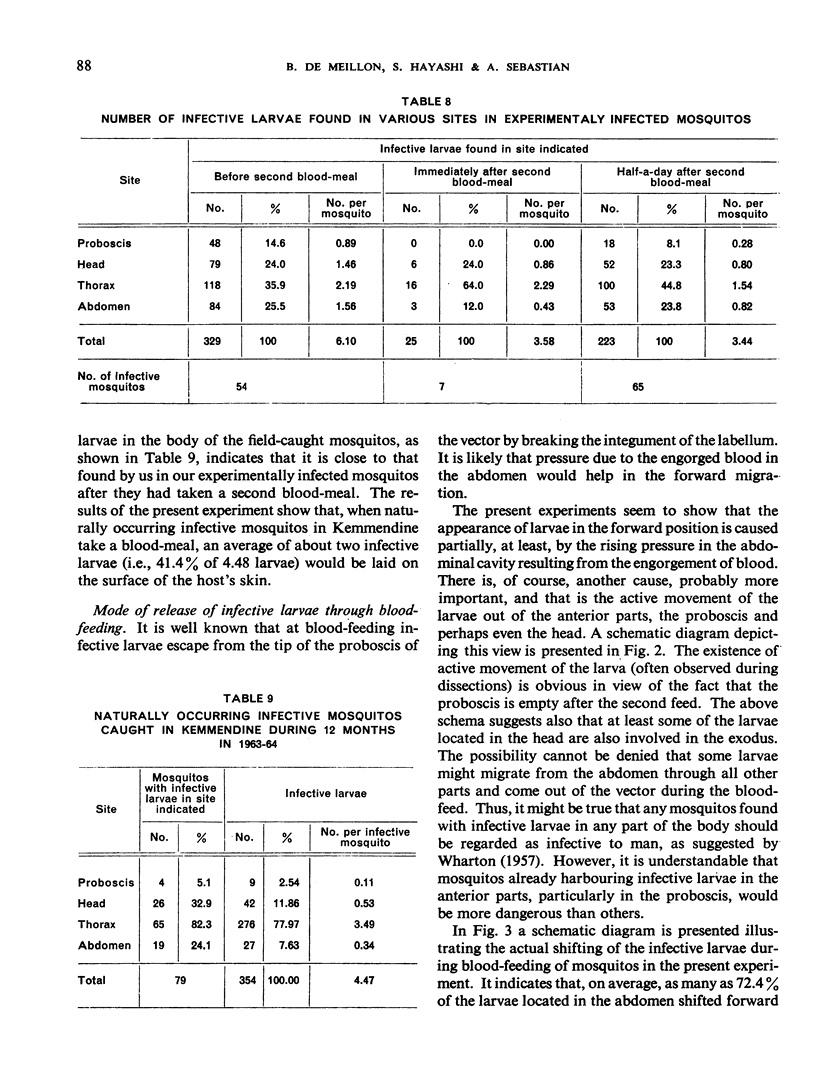

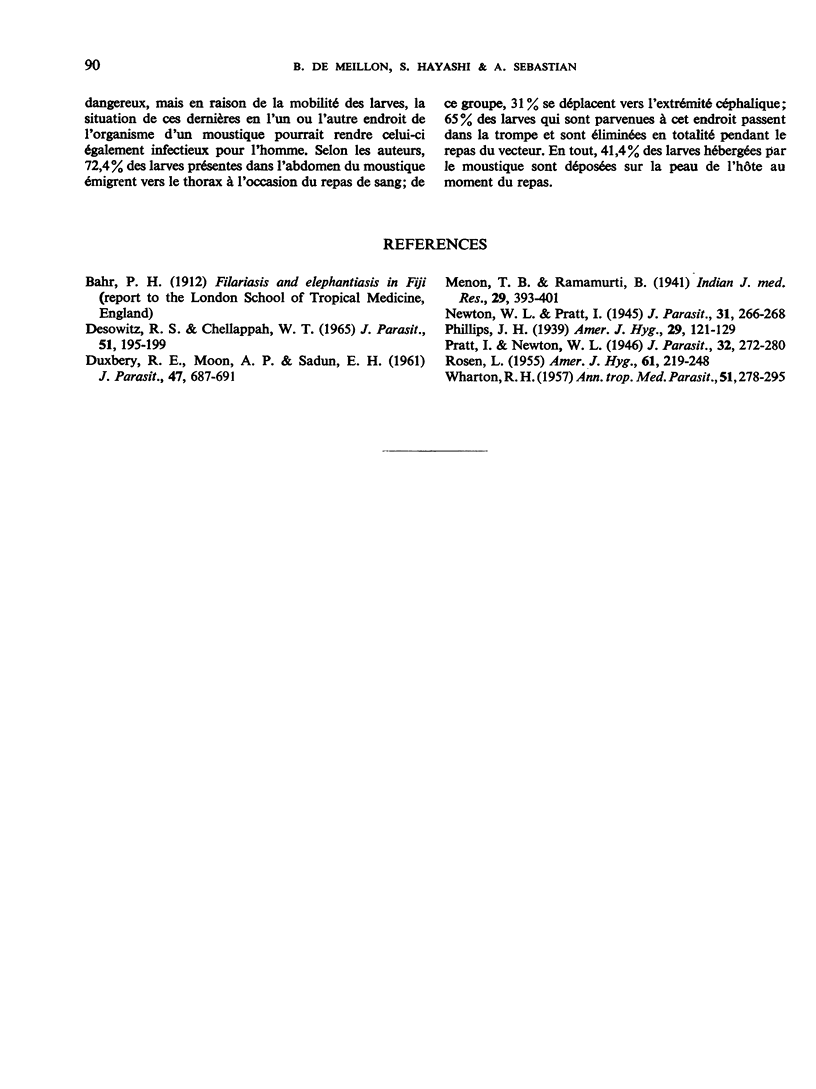
Selected References
These references are in PubMed. This may not be the complete list of references from this article.
- DESOWITZ R. S., CHELLAPPAN W. T. FATE OF TRANSPLANTED THIRD-STAGE BRUGIA PAHANGI LARVAE IN NORMALLY SUSCEPTIBLE AND NONSUSCEPTIBLE MOSQUITO HOSTS. J Parasitol. 1965 Apr;51:195–199. [PubMed] [Google Scholar]
- DUXBURY R. E., MOON A. P., SADUN E. H. Susceptibility and resistance of Anopheles quadrimaculatus to Dirofilaria uniformis. J Parasitol. 1961 Oct;47:687–691. [PubMed] [Google Scholar]
- WHARTON R. H. Studies on filariasis in Malaya: observations on the development of Wuchereria malayi in Mansonia (Mansonioides) longipalpis. Ann Trop Med Parasitol. 1957 Sep;51(3):278–296. doi: 10.1080/00034983.1957.11685817. [DOI] [PubMed] [Google Scholar]


